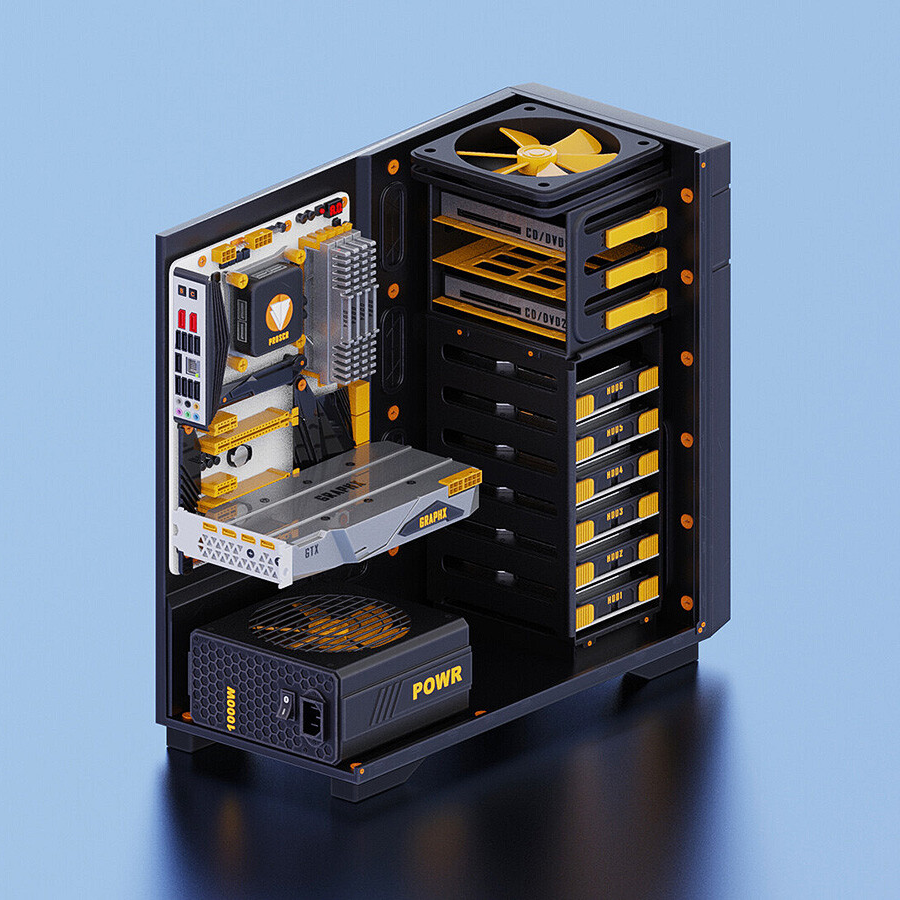My wife and I planned to upgrade a couple of HP desktops we had. Due to a bunch of proprietary HP stuff we ended up buying new motherboards, GPUs, PSUs, and processors. We kept the old RAM sticks we had and the hard drives. With one computer we got everything installed incrementally and is working great so far. With the other computer, I put everything together at once and we had a problem booting up Windows. I ended up reinstalling Windows but now it needs to be activated. I can’t find the original product key to activate Windows and I’m starting to worry I’m gonna need to buy a new Windows key. Do I have any other options here? This is getting really frustrating. To be clear, I’m looking to do this all legally, it’s just really annoying that I already was using Windows and now I can’t.
New parts:
MSI B550 Tomahawk Max Wifi
AMD Radeon RX 7800 XT
AMD Ryzen 7 5700X 8-Core
You dont need to activate windows. You just wont be able to change some appearances but thats it. It will update and work just fine.
You’ve basically built a new computer; generally that means a new license. There’s still a few things you could try though:
- Undo your changes and remake them individually with a little bit of time between each change (this is basically what you did on your first PC)
- Try the activation process and let them know it’s the same PC, just with some hardware upgrades. I’ve had success reassigning an OEM key before using the telephone method.
- Buy a new (non-oem) license and register it with your account (I think you can have up to 5 licenses registered this way then you can pretty much arbitrarily revoke and reassign it among your future computers without hassle)
- Run the activator script
MS is generally pretty flexible regarding personal licenses and use. As long as you aren’t trying to run the same license on multiple machines you should be fine. What you can’t do is move the license from the OEM machine to your new custom build and expect the OEM machine to remain licensed.
This is the right answer. OEM keys are tied to the hardware so you technically need a retail key. The HP machines were almost certainly using OEM keys (chalk the first one working up to luck I suppose).
That said, by calling the licensing clearinghouse on the phone I have had them activate stuff that they probably shouldn’t have so it’s worth a shot. But I haven’t had to call them in over 10 years so YMMV. If you call them you’ll need the original OEM key from the sticker or by booting up the old PC and pulling it from WMI.
One note about pulling it from WMI: if you got a free OS upgrade (i.e. from 8 to 10) you may have been issued a new key that’s different from your original OEM key. This might cause some issues when talking with the agent.
Your luck with phone activation may be different with different agents too, so it might be worth calling back a bit later if you don’t succeed at first.
Ah good point. Cheers.
This is probably your best option at this point, as long as you’re okay with it ethically. It’s just one command to run.
If you haven’t fully move into your new installation, may I suggest installing the IOT version of Windows 11 instead? It has all the features you’d need and none of the cruft the normal consumer version has.IIRC the IOT version is 24H2, which i have heard can cause issues with gaming (mainly Ubisoft games i think?).
I hadn’t heard that, but it wouldn’t surprise me. I haven’t had any issues with games on my IOT install, but none of them have been Ubisoft.
If you had registered the old PC to your account, you may be able to transfer the licence through the activation troubleshooter. I don’t have the steps written down anymore, but somewhere in the troubleshooter is an option to transfer the licence, and it lists all the installations registered to your Microsoft account.
I’ve used it two or three times on Windows 10, but haven’t tried it on 11
Im not going to be the worlds greatest help, but as far as I am aware windows links your license to you motherboard ID or something. That’s why even with a license the affair is going to be messy. Because they inched claimed the license is already in use and cannot be on the new pc.
I could activate then through a Telefone Call thing. But my licence was linked to my account and it showed in my MS account on their website that I own a licence. Without that I would have had no idea to proceed.
So my first step would be to check if you have had registered your old license in your MS account.
Right. Since Windows 8, licenses have been embedded in the BIOS. When you change the motherboard, it’s essentially a whole new PC, which means a new license.
But if the license is linked to your Microsoft account, you may be able to relink the new PC and apply the license.
With OEM computers, the license is only for the hardware it came with.
OEM license keys can not be transferred to new computers.
Even if you get the key installed and activated, you are not legally licensed for that install.
You must have a retail license key to have transfer rights to new systems.
Is that going to cause a problem for the other PC, it seems like everything switched over alright from that, but could my Windows suddenly decide it isn’t activated anymore and give me the same problems?
Probably not. Windows isn’t overly smart about that. If it’s activated it should stay that way.
I’m gonna be that guy, even though I know it’s annoying: This is why you shouldn’t use ms products. ms is a company that prioritises their business model over making products that actually serve your needs. That is not the only choice we have, though they act like it is.
2 things:
-
You may be able to contact the manufacturer with your original model and serial information to get the key.
-
At the risk of sounding very “Lemmy,” you could always install Linux. It is absolutely not as scary as it used to be.
-






